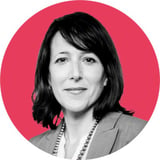Summary
Time is always on our minds in very practical ways—apportioning it for various projects, creating and prioritizing tasks, calendaring, and tracking deadlines and deliverables. Time does, however, have more abstract qualities that require our attention. It drives how we imagine future worlds, set our organizations' visions, track technological trends, manage our enterprises, plan our careers, roadmap our products, and choreograph our people. Each of these activities vary in scale and size, and each has its own cadence. Some focus on years, some on months, some on weeks, some on days. In this talk, Elizabeth Churchill will discuss ways of thinking about time in UX beyond classic, practical notions of "time management". She'll share personal stories from the enterprise and the academy, and invite a conversation about personal journeys of personal life long impact in UX.
Key Insights
-
•
Building social capital and trust inside enterprises increases effective use of formal productivity tools.
-
•
The Yeti collaborative poster allowed cultural co-ownership and broke down language barriers between US and Japanese teams.
-
•
Google Jamboard integrates cloud and G Suite allowing seamless real-time and asynchronous collaboration globally.
-
•
Material Design codifies decades of UX research and principles into a framework used by 90% of Google's product apps.
-
•
UX research on text fields and text legibility directly impacts accessibility standards and influences product designs.
-
•
Ethnographic interviews revealed pain points in designer-to-developer handoff, inspiring new internal collaboration tools.
-
•
Collaboration tools must facilitate trust and meaningful interaction beyond task completion to foster innovation.
-
•
Time boxing aids focus and motivation but must be balanced with reflection on bigger strategic goals.
-
•
Measuring intangible outcomes like rapport, employee happiness, and inter-team trust is critical for justifying internal UX tools.
-
•
Considering time as a material for design encourages long-term thinking about legacy and impact beyond immediate deliverables.
Notable Quotes
"The creation of trust and collaboration environment has a different timescale than communication tools themselves."
"Fuji Xerox would show you how to set up collaborative posters not just as technology but as service for social capital."
"The Jamboard's integration of physical social sharing and distributed digital work artifacts is a new frontier."
"Material Design is both a design philosophy and a framework used by almost all Google apps in some form."
"We tested text fields with Mechanical Turk to find which perform best for most people and fed that into specs."
"Making images and text more legible over complex backgrounds is both a tactical design and accessibility challenge."
"Breaking down silos requires tools that enable cross-team feedback and meaningful collaboration."
"Time boxing reduces anxiety, motivates, but doesn't preclude stepping back to assess bigger goals."
"The CEO wanted rapport, not just productivity, and the collaborative poster created that from scratch."
"When I announced the project shutdown, a flood of employee emails stopped it—it had become part of the fabric."
Or choose a question:
















More Videos

"Everything is a prototype."
Doug PowellClosing Keynote: Design at Scale
November 8, 2018

"Power dynamics exist in every session. People don’t want to be embarrassed or feel put on the spot."
Mila Kuznetsova Lucy DentonHow Lessons Learned from Our Youngest Users Can Help Us Evolve our Practices
March 9, 2022

"Every parent we talked to had some variation of the question: this exists, can I use it right now? Where was this when I needed to apply?"
Sarah GallimoreInspire Progress with Artifacts from the Future
November 18, 2022

"Field usability testing showed stakeholders immediately how much value UX can add by catching issues before deployment."
Lada Gorlenko Sharbani Dhar Sébastien Malo Rob Mitzel Ivana Ng Michal Anne RogondinoTheme 1: Discussion
January 8, 2024

"Who deals with chaos, ambiguity, and disruption best? It’s us, design operations humans."
Alnie FigueroaThe Future of Design Operations: Transforming Our Craft
September 10, 2025

"When executives start questioning your research details, that’s a good sign they’re engaged and trusting the process."
Landon BarnesAre My Research Findings Actually Meaningful?
March 10, 2022

"Truly listening can push us beyond empathy to respect and reflection."
Emily EagleCan't Rewind: Radio and Retail
June 3, 2019

"Keep a pulse on your team morale because re-platforming journeys can either enrich or burn out your people."
Malini RaoLessons Learned from a 4-year Product Re-platforming Journey
June 9, 2021

"Designers are often seen as bottlenecks because our work is harder to estimate and track than engineering’s."
Asia HoePartnering with Product: A Journey from Junior to Senior Design
November 29, 2023
Latest Books All books
Dig deeper with the Rosenbot
What role does legal compliance play in driving accessibility, and why shouldn’t it be the sole goal?
How can national development agencies strategically manage their innovation portfolios to balance risk and impact?
How can organizations create a democratization charter that fits their regulatory and organizational needs?
















